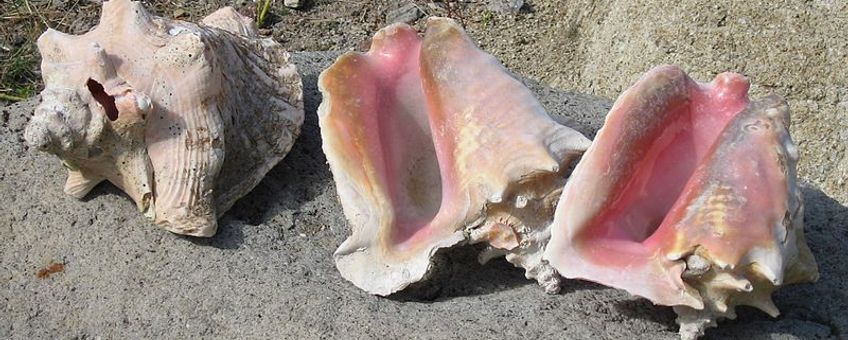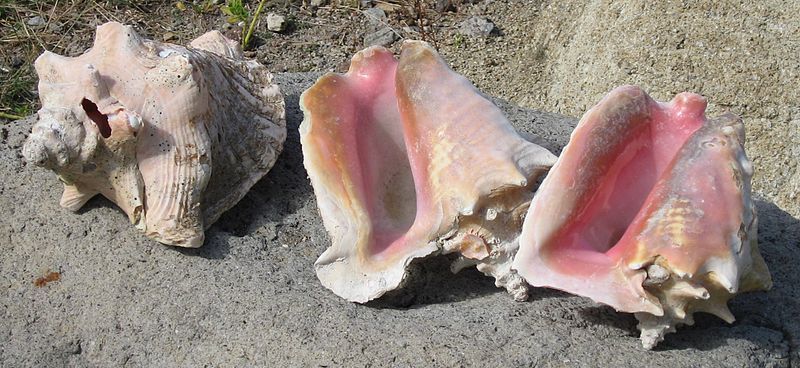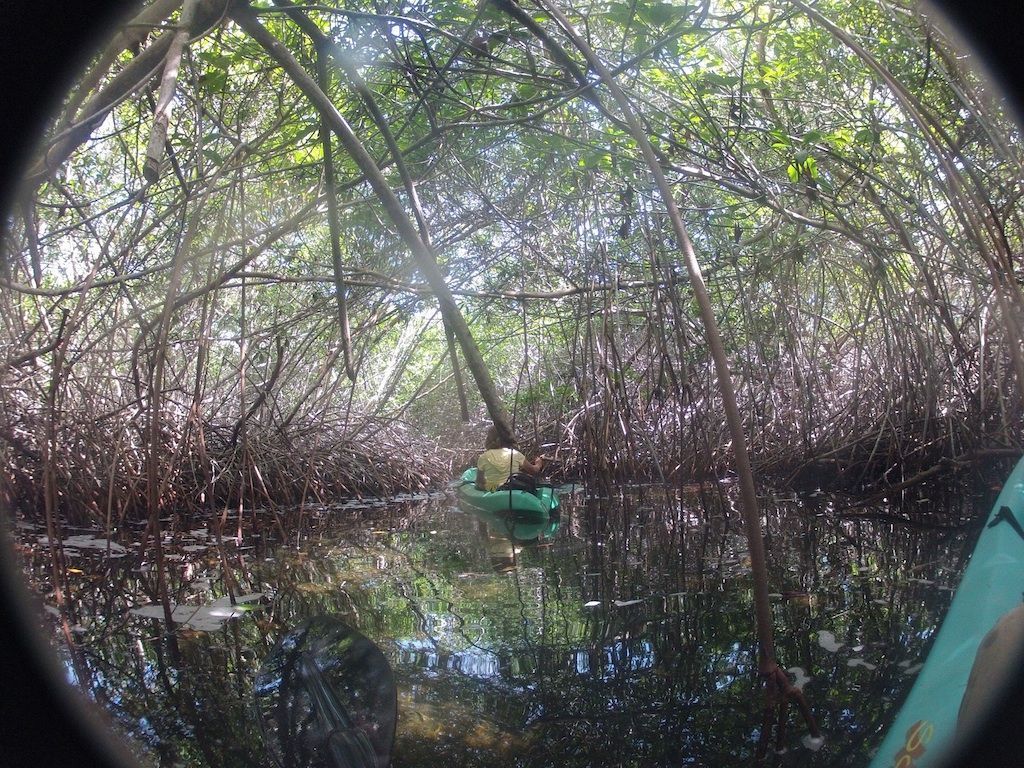
Wandelend mangrovebos niet goed voor roze vleugelhoorn
Bericht uitgegeven door Dutch Caribbean Nature Alliance (DCNA) [land] op [publicatiedatum]
Tijdens een herstelproject voor de roze vleugelhoorn (Lobatus gigas) in Lay Bay, Bonaire, is veel bekend geworden over deze waterslak. Het project richtte zich in eerste instantie op de roze vleugelhoorn en zijn belangrijkste habitat, de zeegrasvelden, maar snel bleek dat de dynamiek van het mangrovebos rond de baai ook erg belangrijk is voor het voortbestaan van deze soort. Het mangrove bos groeit namelijk steeds verder richting de zee, wat ten koste gaat van de zeegrasvelden in de baai. Studenten van Wageningen University hebben onderzocht welke factoren de grootste rol spelen in het groeien en afsterven van mangrovebomen op deze locatie. De resultaten hiervan worden binnenkort bekendgemaakt. Het doel van het project was om vissers op Bonaire te stimuleren de soorten die ze vangen te beschermen, en het ecosysteem in de baai te verbeteren. Het project werd betaald door de Nederlandse Postcode Loterij en bekroond door het IUCN.
Lees verder in het Engels....
The Conch Restoration Project in Lac Bay, Bonaire, was part of a three-year, IUCN awarded initiative funded by the Dutch Postcode Lottery, called “What if We Change”, which aimed to demonstrate ecosystem restoration in action around the world. Now at an end, the project produced a ton of data and many new insights into the species, its behaviour and habitat. The intention was to allow Bonairean fishermen to become the custodians of their own fishing resources and to improve the ecosystem throughout the bay.

The focus of the project has been on the species itself, the Queen Conch (Lobatus gigas) and its primary habitat, the seagrass beds. However, soon after the start of the project, the researchers started to comprehend that the surrounding mangrove forest also plays a very important role. Mangrove forests are a dynamic ecosystem in the coastal zone, with a distinct zonation in species ranging from Red Mangroves (Rhizophora mangle) near the low tide line to Black Mangrove (Avicennia germinans), White Mangrove (Laguncularia racemosa) and Buttonwood (Conococarpus erectus) more inland.
Land reclamation by growing mangrove forests and die-off of mangroves further inland at Lac Bay are natural phenomena. Yet, the rate at which this is happening on Bonaire, is exceptionally high. In just over 35 years, 81 hectares of what used to be open bay, has now become new mangrove forest, while at the same time, further inland, almost the same amount was lost (82 hectares). Overall, the mangrove forest seems to be moving towards the sea and since the central bay of Lac together with the semi-enclosed ponds only cover a little over 400 hectares, the consequence at Lac Bay is that this movement will be at the expense of the seagrass beds, which is critical habitat for conch.
There are several processes influencing growth and die-off of mangroves, such as salinification, inundation, sedimentation and eutrophication. In order to find out which processes are the main drivers in Lac Bay, student researchers Iris Vreugdenhil and Tatiana Lodder of Wageningen University have done fieldwork in Lac Bay from October 2012 to January 2013. Presently, the collected data are being analysed and their thesis reports are being finalised.

The research focused on the effect of increased salinity, anaerobic conditions and nitrogen and phosphorus concentrations on the two most important mangrove species, R. mangle and A. germinans. Since April 2010, tidal gauges have been installed in and around Lac to study the hydrological conditions. Additional dataloggers have been installed, and at most of these stations time series for salinity and dissolved oxygen have been collected. The locations for these dataloggers have been chosen based on the IMARES study by Davaasuren and Meesters in 2012 on mangroves using satellite imagery and accessibility of the area. The time series, together with soil physical data and mangrove vegetation data, will be used to model the growth of the species.
Additionally, niche differentiation of the four mangrove species under abiotic influences has been studied. The project focused on the effects of inundation time, salinity and nutrient resources on the growth of the four mangrove species occurring at Lac. Three types of forest have been studied: R. mangle forest, A. germinans, and a mixed plot of A. germinans, L. racemosa and C. erectus. Nutrients (N/P/K) of soil and leaves have been measured and other growth and vegetation characteristics have been studied, such as leaf mass per area (LMA) and leaf area index (LAI). The findings of both projects will be published in two reports in the near future.
Text: Sabine Engel
Bron: BioNews June/July 2013 edition, DCNA
Photos: Liné1, GNU Free Documentation License; Tatiana Lodder
Nederlandse inleiding: Sara Mulder, De Natuurkalender
